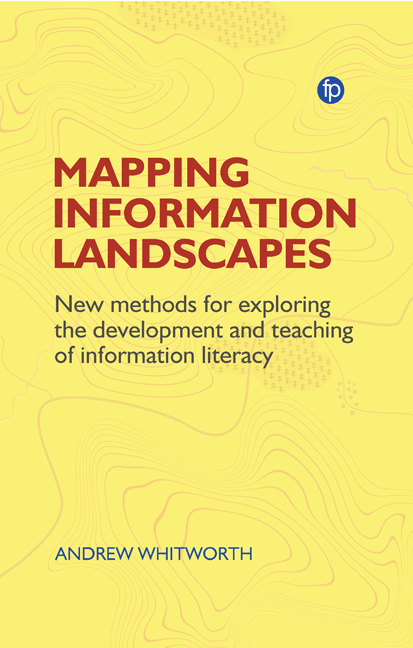 Mapping Information Landscapes
Mapping Information Landscapes Book contents
Introduction
Published online by Cambridge University Press: 23 July 2020
Summary
This book is a study of how educators and learners can use the practice and process of mapping in developing their information and digital literacy, and of the centrality of place and time to these notions. Mikhail Bakhtin used the term chronotope (1981), derived from the Greek words for time and place, to describe the unique moments that we all continuously experience, the differing qualities of which irrevocably shape our encounters with information. The information landscapes (Lloyd, 2010a) which we inhabit can be and, due to our individuality, must be viewed from a multitude of different chronotopes, and thus from a multitude of differing perspectives. And in any decision-making process, whether individual, organisational or societal, judgements are more informed when decision-makers can effectively navigate the information they must draw upon, discern the contours and nuances of these landscapes, map them and learn how to acknowledge difference in how these processes are perceived, and how they subsequently manifest in practice.
The effective use of information to learn and to take informed decisions, and the effective navigation of information landscapes, have been termed information literacy, though as Chapter 1 will discuss, this term has by no means achieved universal acceptance and can mean quite different things depending on the perspective from which one attempts to describe it. Nevertheless, informed judgements are always made against the background of information landscapes that intersect at the here and now – that is, at given chronotopes – and which are organised across both the physical, geographical realm and the virtual, informational one. One of this book's principal arguments is that these two realms are indivisible and the techniques we use to navigate each are essentially similar.
Based on this fundamental indivisibility of the geographical and information landscape, I present mapping as an educational approach that can help us, as individuals and as members of groups, better learn how to navigate the information landscapes that are relevant at our (constantly shifting) chronotope and, as a result, develop and sustain information literacy (IL). To explore this proposition requires defining IL as more than just a set of technical competencies, but as a practice that is embodied in a multitude of social sites that shape how we relate to, and use, information.
- Type
- Chapter
- Information
- Mapping Information LandscapesNew Methods for Exploring the Development and Teaching of Information Literacy, pp. xiii - xxPublisher: FacetPrint publication year: 2020


